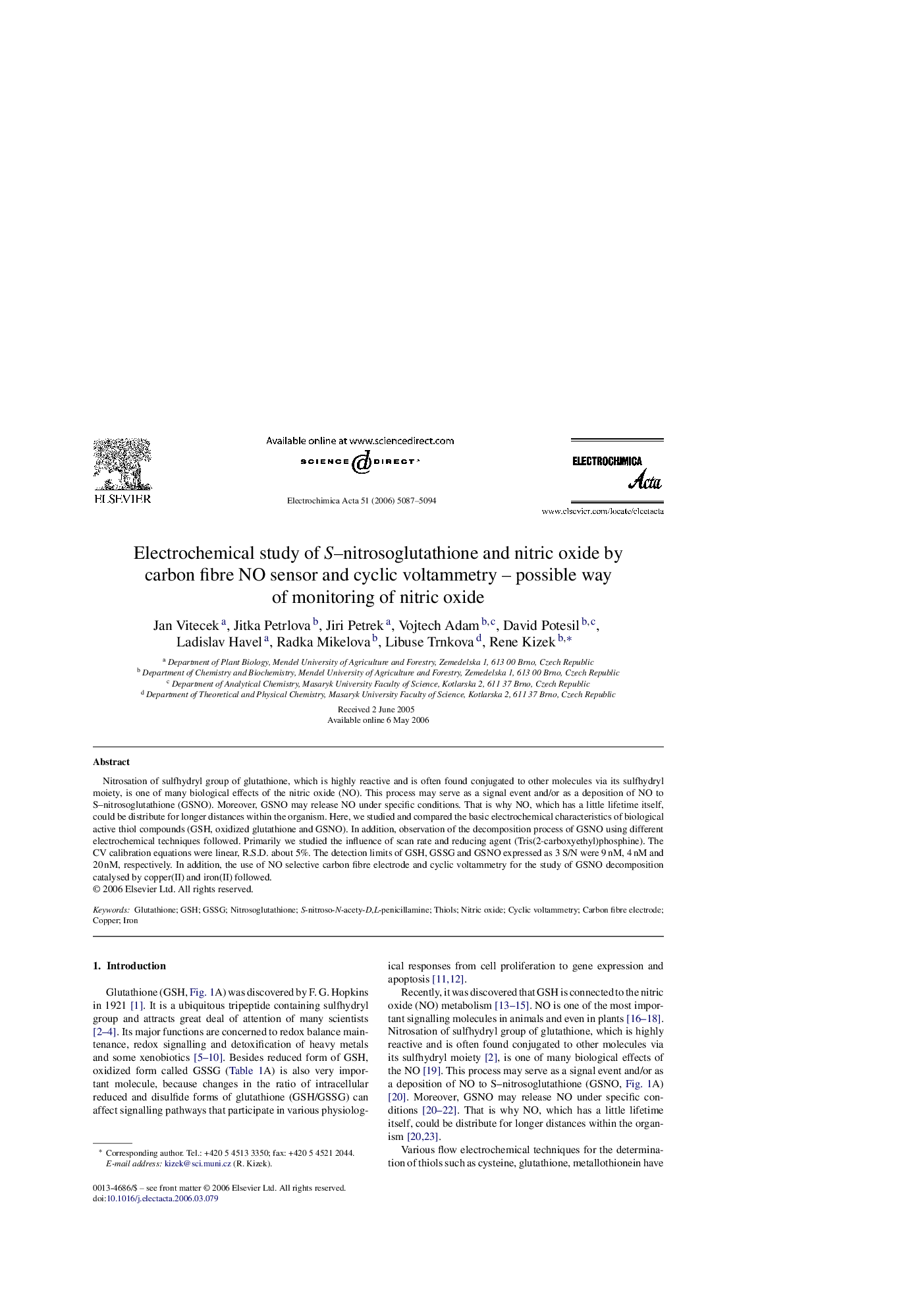| Article ID | Journal | Published Year | Pages | File Type |
|---|---|---|---|---|
| 195715 | Electrochimica Acta | 2006 | 8 Pages |
Nitrosation of sulfhydryl group of glutathione, which is highly reactive and is often found conjugated to other molecules via its sulfhydryl moiety, is one of many biological effects of the nitric oxide (NO). This process may serve as a signal event and/or as a deposition of NO to S–nitrosoglutathione (GSNO). Moreover, GSNO may release NO under specific conditions. That is why NO, which has a little lifetime itself, could be distribute for longer distances within the organism. Here, we studied and compared the basic electrochemical characteristics of biological active thiol compounds (GSH, oxidized glutathione and GSNO). In addition, observation of the decomposition process of GSNO using different electrochemical techniques followed. Primarily we studied the influence of scan rate and reducing agent (Tris(2-carboxyethyl)phosphine). The CV calibration equations were linear, R.S.D. about 5%. The detection limits of GSH, GSSG and GSNO expressed as 3 S/N were 9 nM, 4 nM and 20 nM, respectively. In addition, the use of NO selective carbon fibre electrode and cyclic voltammetry for the study of GSNO decomposition catalysed by copper(II) and iron(II) followed.
